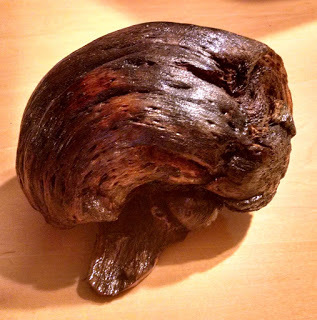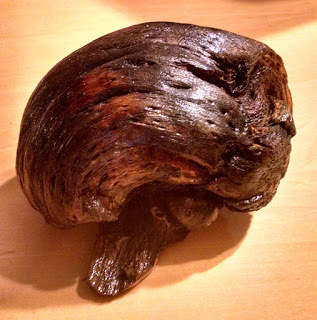Rhobin Lee Courtright's Blog, page 7
March 18, 2016
Secondary Character Surprises
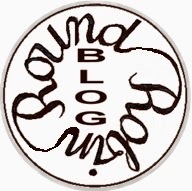 In some stories I’ve read, the secondary characters are as interesting if not more so than the lead characters. It is not only the good ones but also the evil ones who attract my attention. Often it is their curious mannerisms, or funny vocal quips, that draw me. If they make me curious or furious as to why they are as they are, or make me laugh while making me wonder if they are really happy, they distract me from the lead character's dilemma. For me, they can help develop a world, or make a not-so-interesting main character’s story better. I’ve also noticed that not only I have promoted them to main characters in another story.
In some stories I’ve read, the secondary characters are as interesting if not more so than the lead characters. It is not only the good ones but also the evil ones who attract my attention. Often it is their curious mannerisms, or funny vocal quips, that draw me. If they make me curious or furious as to why they are as they are, or make me laugh while making me wonder if they are really happy, they distract me from the lead character's dilemma. For me, they can help develop a world, or make a not-so-interesting main character’s story better. I’ve also noticed that not only I have promoted them to main characters in another story. I hope this doesn’t happen in my own stories. Secondary characters should not overwhelm the main characters in their stories, and I try to keep the extras as story support. I’ve used psychologist’s Carl Jung’s archtypes as described in Christopher Vogler’s The Writer’s Journey to help format main and secondary characters in my stories, along with a Personality Self-Portrait by Dr. John M. Oldham and Lois B. Morris, The later is an interesting book on different types of personalities and personality disorders. Oldham and Morris help me leave my preconceptions about a certain character and develop them in another way. Vogler, however, shows how an ancient method of delivering and a more modern deciphering characters in a story is still valid in today's media. These have helped me determine my characters’ purposes and how to define them as an individual, for if a character has no purpose or personality, it is a character to delete. Those who inhabit a world as no other function than background have names such as waiter, or dog walker, or simply man or woman.
To earn a name in a story, the character has to have a reason to be included. I have also discovered if I put any thought into a secondary character beyond their part in the story, that if I create personality and quirks, they become more personable to me. In turn, they often surprise me by telling me what they will do and how they will react. It’s disconcerting, and they can becoming demanding forces.
I ran into this in my first published book, the fantasy, Magic Aegis. Kissre is a stern but effective mercenary who becomes the heroine’s bodyguard. She was the wrong gender for a mercenary in the place and time of this fantasy. She faced bias in the country where she worked, but she also wouldn’t let me change her into a man. I became stuck writing several scenes with Kissre. It was as if she wouldn’t let me write what I wanted, as if she asked me ‘Would a man in this position do this? I think not. Let me do it my way. It’s how a soldier does it.” It was also how a woman damaged by personal history but secure in herself and her femininity would do it. She surprised me, but I must admit, I haven’t met many female mercenaries. Kissre didn’t kick me in the teeth and demand her story, but my curiosity about her background and future drove me to write her story, Acceptance. Then in her story, while she is arguing with her sister, Tyna demanded a chance to tell her side of the story, which became the story in Change. Secondary characters can become an opportunity and a challenge when writing.
This never happened in the Black Angel space opera series. The multiple-personality lead character Jesslynn Chambers had enough characters inside her to prevent any secondary character from making demands. Keeping each recognizable to the reader by their behavior was hard enough. Later, upon thinking that over, it also made me question if I had a lead character or multiple secondary characters pretending to be a lead character. The series was a surprising, interesting, but difficult writing experience.
Yet, in my third series, Home World, a secondary character who is only mentioned in passing in a second volume, The Nanite Dragoon, who had little impact on the story other than as a friend/ally, piqued my interest. Now the story of Brigit and the other Dragoons, soldiers too dangerous to let live and too valuable to kill, will find new purpose in taming their new home, a nearly complete bioformed planet.
Secondary characters can surprise readers and writers. What I try to do, however, is not have a previous story’s main characters invade the a subsequent volume. They may have limited appearances, but their presence is limited to less than most secondary characters. Because, in reading many series, what I have noticed is that previous main characters tend to lose their distinctive personalities when dropping into a later story. I’d rather not have that happen.
Please visit the following blogs and see what these authors have to say on the topic of secondary characters.
Anne Stenhouse
Skye Taylor
Beverley Bateman
Judith Copek
Connie Vines
Victoria Chatham
Helena Fairfax
Marci Baun
Rachael Kosinski
Hollie Glover
Dr. Bob Rich
Fiona McGier
Published on March 18, 2016 21:30
February 28, 2016
Dragons
Why do so many people love to read about dragons? Dragons are purely mythological, but have appeared as both European and Asian symbols for centuries, possibly in Asia as far back as 3000 BC. Most of the myths don't encompass a story but rather an image. St. George and the Dragon is a exception, a medieval tale about killing a dragon to save a princess. Today dragons still inspire stories. Many current novels feature dragons, notably Irish novelist Anne McCaffrey's stories of Pern, which is a science fiction series involving star travel and biology, and might have impelled current interest. Even more recently, dragon shape-shifters have been chronicled in Shanna Abe's series about drákon (Greek word for dragon, draco is the Latin word) beginning with The Smoke Thief which takes place in the 18th century. Another recent series on dragon shifters is Donna Grant’s Dragon King Series. I just finished reading another novel about dragon shape-shifters in the humorous beginning of an urban fantasy series, I Dream of Dragons by Ashlyn Chase. So whatever the pull of the dragon, it remains with us.
Today dragons are envisioned as Tyrannosaurus Rex sized winged lizards living in caves and often guarding a hoard of golden treasure. As mentioned above, they are often crossed with werewolf shape-shifting legends, the humans involved change into dragons. While dragons have often been portrayed as a lizard of some type, in ancient times they were portrayed as water creatures or snake-like creatures slithering across the land. Some claim the Leviathan of the Bible was a dragon. In Chinese lore they are symbols of good luck and power, often associated with the ruler. In Europe, they were seen as more malevolent creatures.
Throughout all the legends and stories, dragons represent a powerful advisory, and killing the dragon indicates courageously attempting a dangerous endeavor. If you felt fear in the movie Jurassic Park, you can understand how the legend of such a creature affected ancient audiences: dragons were formidable and terrifying.
Where did the ideas for these creatures come from? Certainly the legend creators didn't see them in reality. Yet, perhaps ancients came across dinosaur bones at some point in time and recognized the enormous bones as legs of some creature, perhaps even wings, spawning the rumors of such creatures. More likely they enlarged upon fearsome creatures they saw or heard about like pythons, alligators, crocodiles, or other large lizard or water species. In the Far East it might have been creatures like seahorses or lion fish that helped inaugurated the legend. You can see from these photos of lion fish on the National Geographic site how these beautiful but poisonous fish might have inspired such beliefs.
At the website Whats Your Sign dragons are seen as symbols of the need for strength and courage during times of trouble. They are magical creatures who are masters of all the primal elements of land, sea, air, and fire.
Joseph Campbell in his book The Hero With A Thousand Faces, in the section on Atonement with the Father, says, “Atonement (at-one-ment) [Campbell's implied emphasis presumably points out this mean the conclusion of the action 'at one'] consists in no more than the abandonment of that self-generated monster—the dragon Sin (repressed id). But this requires an abandonment of the attachment to ego itself, and that is what is difficult.” Certainly it has been proven by Campbell, Jung and others, that folklore and mythology often have psychological aspects, so perhaps the creatures of myth do to. Perhaps our fascination with dragons is because one exists within each of us. Something we must either learn to accept, or something we must destroy in order to become our true selves. Something to think about.
Today dragons are envisioned as Tyrannosaurus Rex sized winged lizards living in caves and often guarding a hoard of golden treasure. As mentioned above, they are often crossed with werewolf shape-shifting legends, the humans involved change into dragons. While dragons have often been portrayed as a lizard of some type, in ancient times they were portrayed as water creatures or snake-like creatures slithering across the land. Some claim the Leviathan of the Bible was a dragon. In Chinese lore they are symbols of good luck and power, often associated with the ruler. In Europe, they were seen as more malevolent creatures.
Throughout all the legends and stories, dragons represent a powerful advisory, and killing the dragon indicates courageously attempting a dangerous endeavor. If you felt fear in the movie Jurassic Park, you can understand how the legend of such a creature affected ancient audiences: dragons were formidable and terrifying.
Where did the ideas for these creatures come from? Certainly the legend creators didn't see them in reality. Yet, perhaps ancients came across dinosaur bones at some point in time and recognized the enormous bones as legs of some creature, perhaps even wings, spawning the rumors of such creatures. More likely they enlarged upon fearsome creatures they saw or heard about like pythons, alligators, crocodiles, or other large lizard or water species. In the Far East it might have been creatures like seahorses or lion fish that helped inaugurated the legend. You can see from these photos of lion fish on the National Geographic site how these beautiful but poisonous fish might have inspired such beliefs.
At the website Whats Your Sign dragons are seen as symbols of the need for strength and courage during times of trouble. They are magical creatures who are masters of all the primal elements of land, sea, air, and fire.
Joseph Campbell in his book The Hero With A Thousand Faces, in the section on Atonement with the Father, says, “Atonement (at-one-ment) [Campbell's implied emphasis presumably points out this mean the conclusion of the action 'at one'] consists in no more than the abandonment of that self-generated monster—the dragon Sin (repressed id). But this requires an abandonment of the attachment to ego itself, and that is what is difficult.” Certainly it has been proven by Campbell, Jung and others, that folklore and mythology often have psychological aspects, so perhaps the creatures of myth do to. Perhaps our fascination with dragons is because one exists within each of us. Something we must either learn to accept, or something we must destroy in order to become our true selves. Something to think about.
Published on February 28, 2016 21:30
February 12, 2016
Bad Boys, Wicked Women
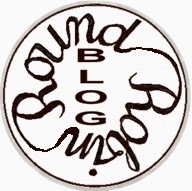
“Bad bad, bad, bad boy, you make me feel so good” (Bad Boy lyrics, Gloria Estefan song).
Have you ever wondered why bad boys (and men) are so prevalent in romance novels, and conversely, why bad girls are so often reviled?
Well, presumably this theme developed because the predominately female audience buys these stories—lots of them. Matter of fact, woman often drive the market. They read more fiction than men in general. An NPR article on books states “Men account for only 20 percent of the fiction market, according to surveys conducted in the U.S., Canada and Britain.” This may well explain why romance has become so large a part of other genres since they began crossing and melding first in e-books. Now mixed-genres have become standard in major publishing house novels
One reason to read is to escape day-to-day life. Romance is a constant and reoccurring aspect of life driving the marriage industry, and romances let readers escape back into the anguish and doubt filled, heady, hormonal, crazy, first moments of love. This might also explain why bad girls are reviled. They are inevitably the seductive, experience, unethical competition the heroine, with whom the reader most closely identifies, must overcome. (We are all good girls at heart, aren’t we? Who roots for the competition? However, a caveat: even a 'bad' woman's story could be very interesting.)
But what is the allure of the bad boy? In most ‘bad boy’ narratives, the at-first wary female changes the roguish male into the love-match of her dreams, but much of the charm depends on how the ‘bad boy’ is defined. The more noxious the author makes the male, the harder it is for love to convincingly convert him. Promiscuousness is most often serial monogamy and fairly easy to overcome. (But even that is changing with the expansion of erotic moments in basic romances.) Yet the male finds something so special in the female that he must have her, and only her. When she resists because of his reputation, his love forces him to change. This knowledge builds the heroine’s, and the reader’s, feeling of self-worth.
Maryanne Fisher, in a Psychology Today post, claims that romances let the woman reader experience the emotional roller-coaster of a love affair without the physical betrayal of whoever she is involved with or damage to that real-life relationship. I’ve also read (albeit, a long time ago) where claims have been made that all characters in a book reflect the mental merging of all aspects of a single personality. Hmm; could this mean we must all learn to love our bad sides? Maybe that was philosophical based novels; interesting, but too much psychobabble for me. Certainly all types of fiction can have profound effect on the reader from helping them learn about themselves or humanity, to learning how to ‘fit-in’ or deal with society. And if the reader does take on aspects of the character they identify with, I’m sure all women readers like to share the feeling that they are so ‘special.’
Certainly life experiences, and idioms like tigers can’t change their stripes, or leopard don't change their spots, give fair warning that these type of pairings often lead to future disaster. But that is real life and this is fiction—or make believe. Nonetheless, when audiences hear Danny and Sandy singing “You’re the One That I Want” in the movie Grease (another story form), they understand that both characters have substantially changed. Maybe that’s the message: hope makes all thing possible.
For more takes on the bad-boy phenomena, check out the following Round-Robin blog posts.
Skye Taylor
Helena Fairfax
Rachael Kosinski
Anne Stenhouse
Connie Vines
Fiona McGier
Published on February 12, 2016 21:30
January 22, 2016
Writing Goals for 2016

As indicated in my previous post, I don’t make resolutions, I only have goals, but that list is extensive and changes frequently. Since I do fiction for major writing and non-fiction for blog writing, I always have projects aplenty.
This year in fiction, I have plans for a second and third historical novel based on one just completed. The finished one, and these two planned stories plus perhaps two more volumes for a total of five stories, I consider one project following one family through time. This has been a long-term project started in 2000. Hopefully, the follow up volumes won’t take such a lengthy development.
You might ask, what took so long in the first place? The answer, in a word, is: research. Much information for the 8th century in Europe and about the Franks in particular was mostly in a foreign language, but increasingly translations have become available. Yet still, how did the Franks greet each other? Sounds simple, but certainly not hello, yet the actual wording is unknown. So when I say much, the information lacks that quality. Not only are the Frankish languages (yes two) dead, most documentation has disappeared. In the first volume details about setting, such as social interactions and how things were done, constantly interrupted me. Now that I’ve investigated and determined those things (making some up along the way), writing the next stories, I hope, will be faster. I think, however, the historical record and how my characters play between events might still hinder the stories’ development.
I have about fifteen stories with settings, characters, and beginning plots ready to go, but parts of my imagination on these stories haven’t kicked-in. Until it does, I usually can't force progress. Still, I usually operate better when I have two projects under production. Perhaps because if one stalls out, I can switch to the other. Three are too many, unless the non-fiction writing counts.
Short essays and other factual writings topics interest me and I like to post them on my two blogs, one devoted to gardening and crafts, and this one on my writing and my world. So hopefully, 2016 won’t move as fast as 2015, and I will actually accomplish my goals. If not, they’ll still be in the works.
Please visit the following authors and investigate their writing plans for 2016:
Victoria Chatham
Margaret Fieland
Skye Taylor
Diane Bator
Beverley Bateman
Connie Vines
Bob Rich
Rachael Kosinski
Judith Copek
Kay Sisk
Anne Stenhouse
Hollie Glover
Helena Fairfax
Fiona McGier
Published on January 22, 2016 21:30
Writing Goal's for 2016

As indicated in my previous post, I don’t make resolutions, I only have goals, but that list is extensive and changes frequently. Since I do fiction for major writing and non-fiction for blog writing, I always have projects aplenty.
This year in fiction, I have plans for a second and third historical novel based on one just completed. The finished one, and these two planned stories plus perhaps two more volumes for a total of five stories, I consider one project following one family through time. This has been a long-term project started in 2000. Hopefully, the follow up volumes won’t take such a lengthy development.
You might ask, what took so long in the first place? The answer, in a word, is: research. Much information for the 8th century in Europe and about the Franks in particular was mostly in a foreign language, but increasingly translations have become available. Yet still, how did the Franks greet each other? Sounds simple, but certainly not hello, yet the actual wording is unknown. So when I say much, the information lacks that quality. Not only are the Frankish languages (yes two) dead, most documentation has disappeared. In the first volume details about setting, such as social interactions and how things were done, constantly interrupted me. Now that I’ve investigated and determined those things (making some up along the way), writing the next stories, I hope, will be faster. I think, however, the historical record and how my characters play between events might still hinder the stories’ development.
I have about fifteen stories with settings, characters, and beginning plots ready to go, but parts of my imagination on these stories haven’t kicked-in. Until it does, I usually can't force progress. Still, I usually operate better when I have two projects under production. Perhaps because if one stalls out, I can switch to the other. Three are too many, unless the non-fiction writing counts.
Short essays and other factual writings topics interest me and I like to post them on my two blogs, one devoted to gardening and crafts, and this one on my writing and my world. So hopefully, 2016 won’t move as fast as 2015, and I will actually accomplish my goals. If not, they’ll still be in the works.
Please visit the following authors and investigate their writing plans for 2016:
Victoria Chatham
Margaret Fieland
Skye Taylor
Diane Bator
Beverley Bateman
Connie Vines
Bob Rich
Rachael Kosinski
Judith Copek
Kay Sisk
Anne Stenhouse
Hollie Glover
Helena Fairfax
Fiona McGier
Published on January 22, 2016 21:30
January 2, 2016
Another Year Passed — Too Fast
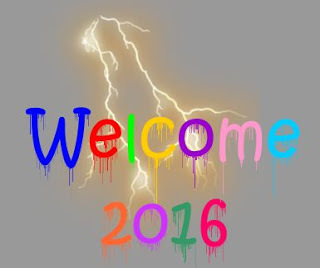 Here it is 2016. I don't make resolutions, the word just sounds too, well, resolute, to unyielding, and I have a bad habit of breaking them. Instead I have a list of projects and goals to start and some to finish. Things work out better and I can put a date on those things that get done and know in the future I accomplished something that year.
Here it is 2016. I don't make resolutions, the word just sounds too, well, resolute, to unyielding, and I have a bad habit of breaking them. Instead I have a list of projects and goals to start and some to finish. Things work out better and I can put a date on those things that get done and know in the future I accomplished something that year.Do you remember sitting in an elementary classroom waiting for the dragging minutes to pass? Time moved so slowly. For every year you live, time seems to move faster. Once you get a job and start raising a family, time flies by. While I know I was conscious for every day in 2015, many of the details have already become obscured, the same for past years, too. Memory isn't often a lucid thing. I have spent some time over the past few months transferring my falling-apart erratic paper journals to digital format. I didn’t write in these diaries everyday, sometimes not every month or even year, but it has been interesting reading about things I had forgotten happened. Which is why I encourage everyone to keep a journal of personal thoughts on the important events in their life, the trips, vacations, important family happenings and gatherings, and achievements. Do so as you think about it and forget an everyday regiment, its too great a hassle. That way you can go back and visit the moment. As long as we have electricity, that is. Digital materials also melt way. If you truly want to keep a copy for posterity, print digital materials off on good cotton content paper. Now I need to go follow my own advice.
Published on January 02, 2016 08:51
Another Year Passed -- Too Fast
 Here it is 2016. I don't make resolutions, the word just sounds too, well, resolute, to unyielding, and I have a bad habit of breaking them. Instead I have a list of projects and goals to start and some to finish. Things work out better and I can put a date on those things that get done and know in the future I accomplished something that year.
Here it is 2016. I don't make resolutions, the word just sounds too, well, resolute, to unyielding, and I have a bad habit of breaking them. Instead I have a list of projects and goals to start and some to finish. Things work out better and I can put a date on those things that get done and know in the future I accomplished something that year.Do you remember sitting in an elementary classroom waiting for the dragging minutes to pass? Time moved so slowly. For every year you live, time seems to move faster. Once you get a job and start raising a family, time flies by. While I know I was conscious for every day in 2015, many of the details have already become obscured, the same for past years, too. Memory isn't often a lucid thing. I have spent some time over the past few months transferring my falling-apart erratic paper journals to digital format. I didn’t write in these diaries everyday, sometimes not every month or even year, but it has been interesting reading about things I had forgotten happened. Which is why I encourage everyone to keep a journal of personal thoughts on the important events in their life, the trips, vacations, important family happenings and gatherings, and achievements. Do so as you think about it and forget an everyday regiment, its too great a hassle. That way you can go back and visit the moment. As long as we have electricity, that is. Digital materials also melt way. If you truly want to keep a copy for posterity, print digital materials off on good cotton content paper. Now I need to go follow my own advice.
Published on January 02, 2016 08:51
December 18, 2015
Writing Time
 All authors seems to have a different method when and how they arrange time to write. Some write a precise number of hours at a certain time each day. I am not that disciplined, but I can see where this would help a writer to consistently create work. I cannot follow this framework, especially at this time of year. Holidays means family and friends, visits, long to-do lists, and keeping up at work. Plus, other life events intervene, and these must take precedence.
All authors seems to have a different method when and how they arrange time to write. Some write a precise number of hours at a certain time each day. I am not that disciplined, but I can see where this would help a writer to consistently create work. I cannot follow this framework, especially at this time of year. Holidays means family and friends, visits, long to-do lists, and keeping up at work. Plus, other life events intervene, and these must take precedence.Besides, I have to have a story sizzling in my mind to stay working on it until it reaches a fairly complete stage. Right now, three are bouncing around in my brain, but my logical and creative viewpoints are arguing about how to make them different, how to make them suspenseful, and how to make them interesting, so the developmental stage is dragging on. Plus, two finished manuscripts are waiting, in need of a final revision. Yet, it seems like I haven't really written in months, and I’m not sure this pre and post production stuff counts. As of now, actual writing will have to wait until after December 25th, but this time of year is productive in other ways than writing—it does stimulate my imagination.
All this separation from creating manuscripts is useful. As much as fiction writing is all in the mind, the details that make the story connect with readers depends on an author’s interaction and experience with others.
Anyway, I usually write best in summer, so when I'm stuck on details and plot, I can go walk or garden both of which busies my body but allows my mind to zone out and then focus in.
Skye Taylor
Diane Bator
Beverley Bateman
Connie Vines
Anne Stenhouse
Rachael Kosinski
Marci Baun
A.J. Maguire
Bob Rich
Hollie Glover
Published on December 18, 2015 21:30
December 11, 2015
Hiaku 1
Published on December 11, 2015 12:49
Inside dark heart wood,invasion spurs defiance;beauty eme...
Published on December 11, 2015 12:49

